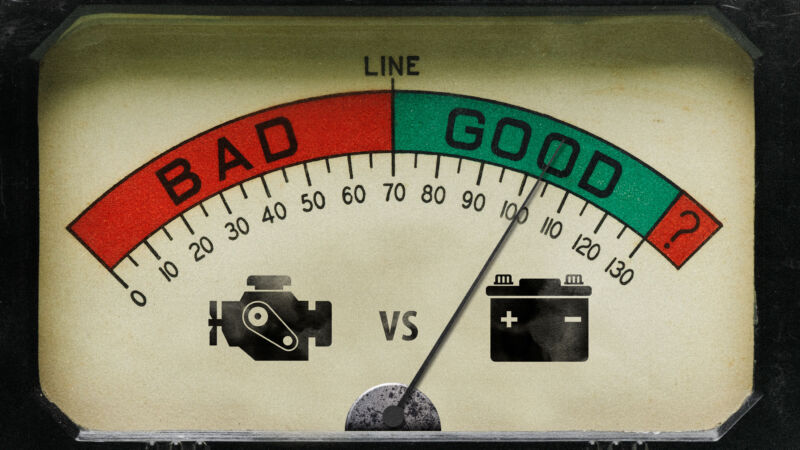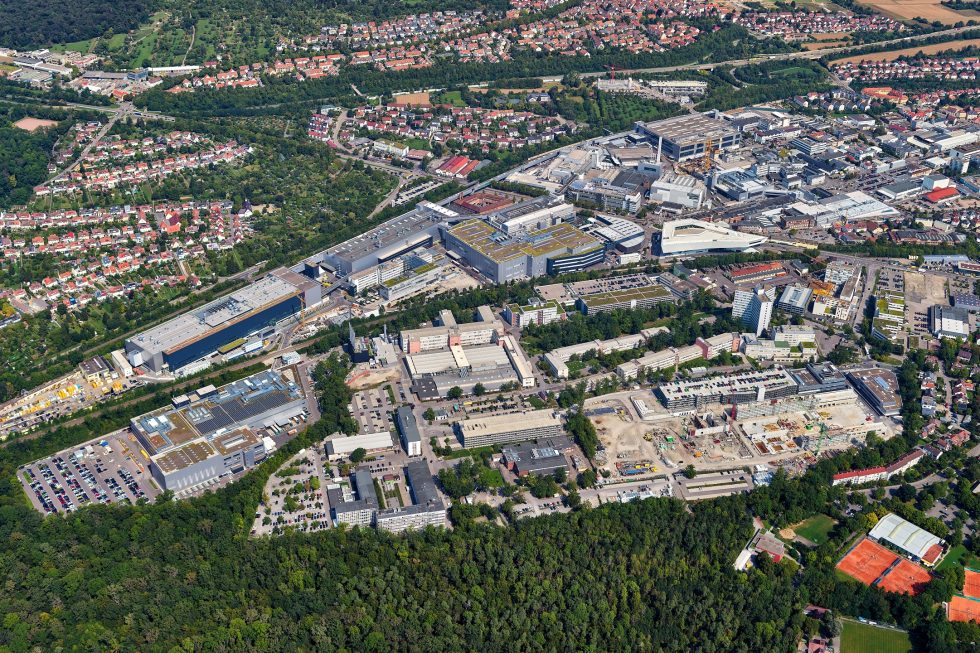
For many people, buying an electric vehicle puts a stake in the ground—if I'm going to drive around town, I'm going to do it while reducing my carbon footprint.
“Gone are the days of burning toxic gasoline. A new age of electrons and instant torque is upon us,” you might say, standing next to your new vehicle and blue recycling bin.
But as with traditional vehicles, not all EVs are equal in terms of their impact on the world. A quick look at the specs and sheer size of the new GMC Hummer EV is all you need to understand where some automakers are willing to take the powertrain—and it's not in service of efficiency.
Not all EPA testing is equal
If you want to determine which EVs are the most efficient, a good place to start is the Environmental Protection Agency’s fuel consumption ratings. The EPA lists electric vehicles based on the amount of energy they use to travel 100 miles, and the lower the number of kilowatt-hours of electricity used, the more efficient the vehicle is. For example, according to the EPA, the 2022 Tesla Model 3 RWD uses 25 kWh per 100 miles traveled, while the 2022 Audi e-tron S (with 21- or 22-inch wheels) uses a less-efficient 52 kWh per 100 miles traveled. (Note that larger wheels typically reduce the range of a vehicle.)
For the model year 2022, these are the top five most efficient vehicles for sale right now based on the EPA's measurement of energy used per 100 miles:
- 2022 Tesla Model 3 RWD: 25 kWh
- 2022 Lucid Air Grand Touring: 26 kWh
- 2022 Chevy Bolt: 28 kWh
- 2022 Hyundai Kona Electric: 28 kWh
- 2022 Tesla Model S: 28 kWh
The top 10 finishers were the Model Y, Bolt EUV, Kia EV6, Hyundai Ioniq 5, and finally, the Kia Niro, all of which posted 30 kWh of energy usage per 100 miles or lower.
These are impressive numbers, but there’s something else to take into consideration—namely, the adjustment factor used to determine EPA range data. To get these numbers, all EVs are strapped to dynamometers (like a treadmill for cars) and run until their battery is depleted. It’s not quite a real-world test, as the vehicles don't have to deal with changing elevations, wind, asphalt discrepancies, and all the various other issues they would encounter on actual roads.
To make matters a bit more complicated, some automakers take the EPA's 30 percent adjustment factor. For example, if a vehicle travels 500 miles on the dynamometer, the automaker takes a 30 percent hit, which reduces that range by 150 miles, giving you 350 miles of range on the EPA cycle. It’s the method used by Hyundai, Kia, and GM.
Tesla and Lucid do something different. They perform additional runs on the dynamometer and are allowed to use those results to produce better adjustment factors. Those numbers help bump their range numbers up.
So while the EVs listed above are certainly efficient, they’re not all being tested in the same way, and that can result in discrepancies.
Factory impact
As automakers are transitioning to battery-electric vehicles, they're also touting their current or eventual carbon-neutral factories. A cleaner factory results in a cleaner vehicle coming off the line. It’s a commendable plan, but for many manufacturers, it's a promise that hasn’t quite been implemented yet.
Tesla seems to have the most difficulty in this area at its Fremont, California, factory, where it produces all the vehicles it sells in the United States. In February 2022, the automaker settled with the EPA over Clean Air Act violations spanning from 2016 through 2019. In 2019, the company was fined by the EPA for hazardous waste violations, and in May of 2021, the Bay Area Air Quality Management District fined the company $1 million for violations, including exceeding its permitted emissions.
The Lucid Air is built at the company’s new Arizona factory. The 500-acre property in Casa Grande, Arizona, spun up in the fall of 2021, but the company hasn’t yet announced any carbon-neutral or energy-reducing initiatives at the plant.
The Kia EV6 is built in Hwaseong, Korea, and Kia announced that it has improved the handling of chemicals and is moving to alternative products for the production of vehicles at the plant.
Meanwhile, Hyundai’s Ioniq 5 and Kona Electric are both built at Ulsan Plant 1 in South Korea. The company announced that it plans to make all locations carbon neutral and run on 100 percent renewable power by 2045. That's a long way off.
Finally, the Chevy Bolt and Bolt EUV are both built at the Orion plant in Michigan, which uses landfill gas to power the plant.
Other manufacturers are doing better, though. While the Porsche Taycan isn’t on the top 10 list, the company's Zuffenhausen factory is carbon neutral, and all electricity comes from renewable sources. So it's possible for an automaker to hit its factory efficiency goals; it just might take longer for some to do so.

reader comments
845